The Intensity Frontier
The intensity frontier offers a unique path to the heart of 21st-century particle physics. Fermilab will play a leading role in putting advanced accelerator and detector technologies to work for intensity-frontier experiments.
More information about the intensity frontier
US Particle Physics: Scientific Opportunities
Particle Physics Project Prioritization Panel Report
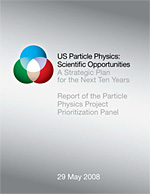
In November 2007, at the request of the Office of High Energy Physics of the Department of Energy and the National Science Foundation, the High Energy Physics Advisory Panel reconstituted the Particle Physics Project Prioritization Panel for the purpose of developing a plan for US particle physics for the coming decade under a variety of budget assumptions. Appendix A of this report gives the charge to the P5 panel; Appendix B lists its membership. To carry out this charge the panel organized three information-gathering meetings, at Fermilab in January, at Stanford Linear Accelerator Center in February, and at Brookhaven National Laboratory in March of 2008. Appendix C gives the agendas for these meetings. Besides talks by experts in the field, each of the three meetings included a Town Meeting, an open session where members of the community could voice their advice, suggestions and concerns to the panel. The panel also invited letters from the worldwide particle physics community, to offer their points of view for consideration. The panel held an additional meeting in early April to put together the first draft of this report.
P5 Report (pdf)
Experiments at the Intensity Frontier
US Department of Energy—Office of High Energy Physics
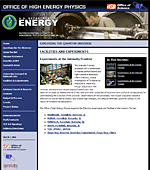
The Intensity Frontier, accessed with a combination of intense particle beams and highly sensitive detectors, offers a second, unique investigation of fundamental interactions. Neutrinos, though ubiquitous in the universe, are elusive and require populous beams and vast detectors to observe. Measurements of the mass and other properties of neutrinos have profound consequences for understanding the evolution of the universe. Observations of rare processes, that require exquisitely sensitive detectors as well as intense beams, also explore high energies, providing an alternate, powerful window to the nature of fundamental interactions.
New tools forge new frontiers
From symmetry, August 2008
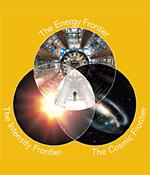
US particle physics is pushing forward on three frontiers. Each has a unique approach to making discoveries, and all three are essential to answering key questions about the laws of nature and the cosmos.
In 1665, when natural philosopher Robert Hooke first looked through a microscope at a slice of cork, his view of the world around him changed forever.
High-energy physics beyond E=mc2
From symmetry breaking, February 13, 2009
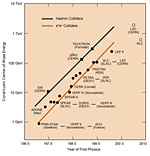
When it restarts, the Large Hadron Collider will be the largest and highest-energy particle collider in the world. The LHC may be the last of its kind in the evolutionary chart of particle colliders, according to a presentation by Craig Dukes, a particle physicist at the University of Virginia, at the AAAS conference.
Key to origin of universe could be neutrinos and Project X
From symmetry breaking, February 13, 2009
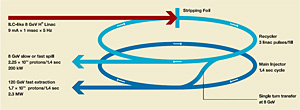
You shouldn’t be here. Not just reading this blog, but anywhere.
You shouldn’t exist. Period.
Moments after the big bang, equal amounts of matter and antimatter floated through the universe and when particles of each collided, they annihilated each other, leaving nothing but free floating energy in their paths.
Suddenly something changed, allowing for more matter than antimatter. The little extra bit that escaped annihilation clumped together and over time planets… and eventually you formed.

